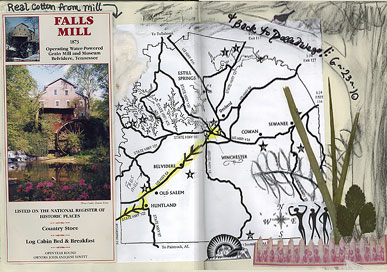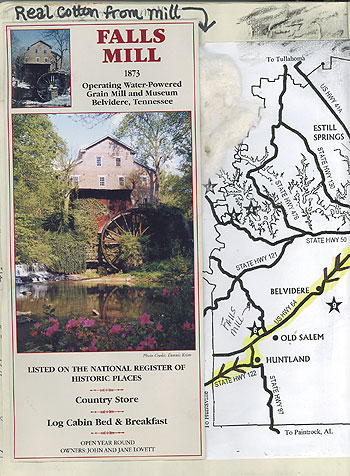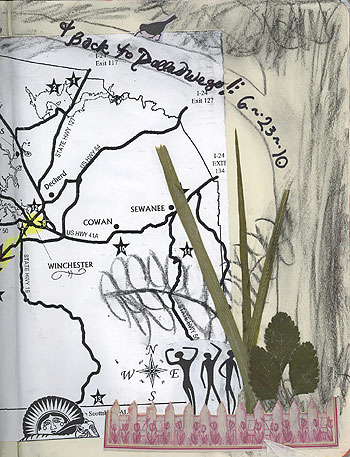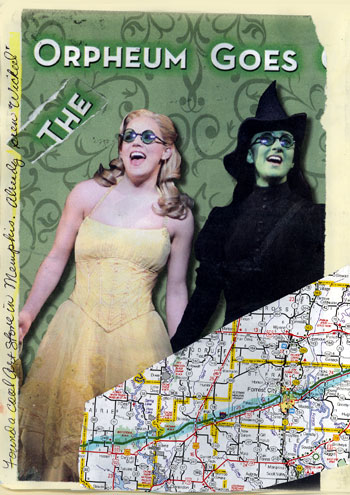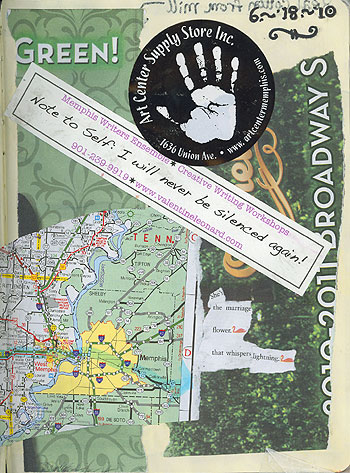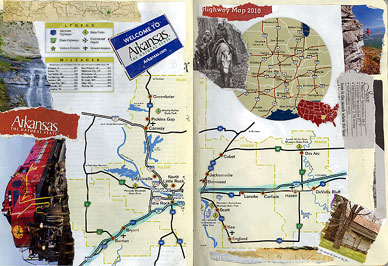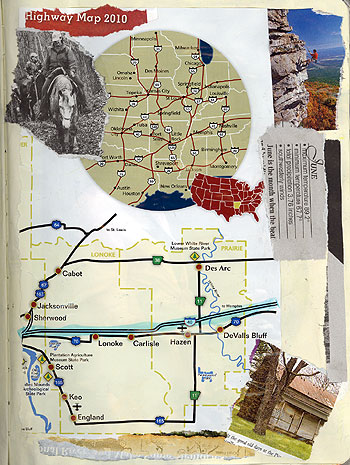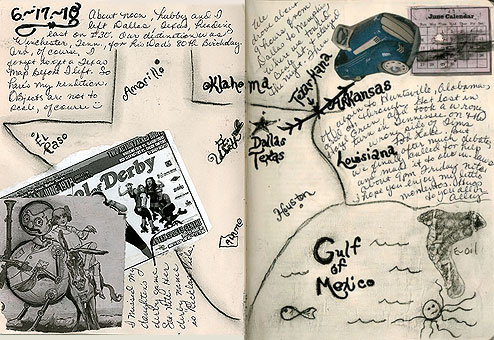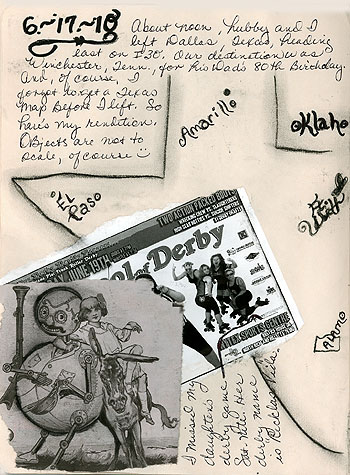Maps, cityscapes, landscapes… they’re not just for travel journals.
There are many ways you can include them in your personal art journals, too.
If you’d like to create fine art abstract landscapes in your artists journal, I think Cathy Mevik’s demo will inspire you. If you’re not a painter, don’t let this scare you; I think anyone can create landscapes like these.
The video a little over 11 minutes long, but – for those who’d love to paint like this – it’s time well spent.
Video URL: https://youtu.be/HCYfAHVePMo
![]()
At the other extreme, here’s what James Gulliver Hancock draws. It’s a two-minute video, and he explains why he draws buildings, and what he learns as he draws them.
Video URL: https://youtu.be/360r-iyK_Eg
![]() Also, I kind of love that one of his books – with buildings and maps – became an interactive exhibit. This half-minute video is worth seeing:
Also, I kind of love that one of his books – with buildings and maps – became an interactive exhibit. This half-minute video is worth seeing:
Video URL: https://youtu.be/DwETY_OK86w
![]() If you’d like to explore making maps, this book looks fascinating. As soon as I saw this review video, I ordered the book. (The video is eight minutes long, but you’ll get the general idea in the first two or three minutes.)
If you’d like to explore making maps, this book looks fascinating. As soon as I saw this review video, I ordered the book. (The video is eight minutes long, but you’ll get the general idea in the first two or three minutes.)
Video URL: https://youtu.be/eKVdfRl05S0
I thought it was okay, but I’ll admit it didn’t inspire me as much as I’d hoped. Here’s the Amazon link, anyway. Use the “look inside” to decide if it’s your kind of book: The Art of Map Illustration
![]() If drawing and painting aren’t your strong suit, don’t despair. You can still bring maps and architectural designs to your journaling.
If drawing and painting aren’t your strong suit, don’t despair. You can still bring maps and architectural designs to your journaling.
Here’s a landscape-y, map-y kind of art journaling demo. It’s by Carolyn Dube, and she uses a stencil, some acrylic paint, and a pen. The video is about four minutes long, and – once you get the idea – you can fast-forward through it to see how she completes it.
Video URL: https://youtu.be/ZUXK1HkFhiI
The stencil is by Maria McGuire for StencilGirl, and you can find a similar stencil by her – and other StencilGirl artists – at Amazon.
![]()
And finally, for oh-my-goodness inspiration…
At first, Blythe Scott’s work may look like modern landscapes but, close-up, you’ll see mixed media elements. She’s using some materials that never crossed my mind, and they could go into a mixed media artists journals, too.
This five-minute video includes breathtaking outdoor scenes, how her art is inspired, and some great insights about studio work, using drawing, painting, and mixed media elements.
https://youtu.be/p5_oOuzpAUQ
![]()

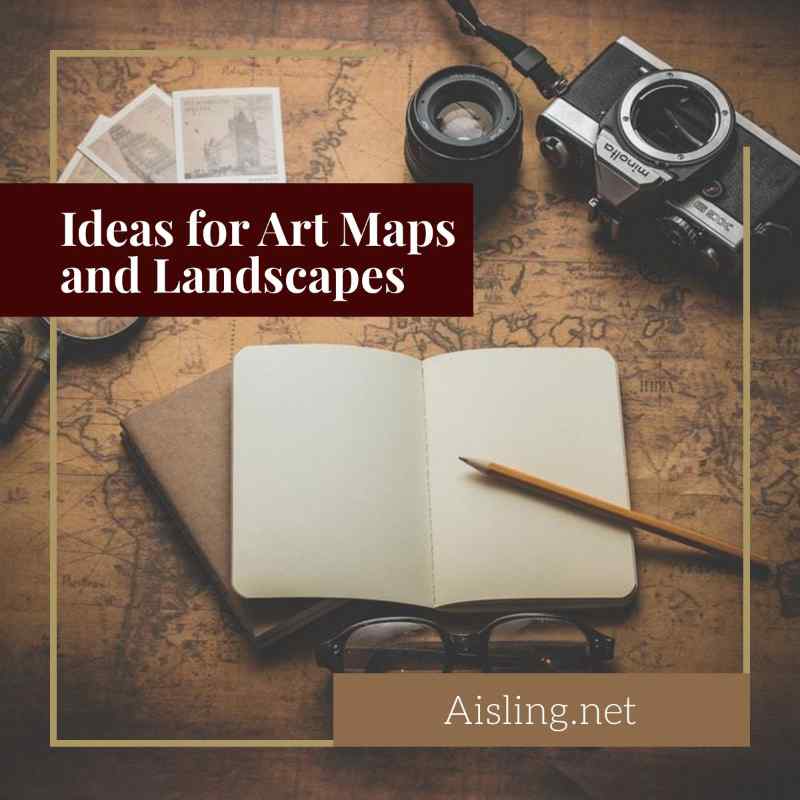
 Do you struggle to collect and organize collage photos, papers and ephemera?
Do you struggle to collect and organize collage photos, papers and ephemera? A composition book art journal is any journal that’s kept in a composition book. Those are generally school-type, saddle-sewn (along the crease) notebooks with cardboard covers… similar to exam/test booklets, but a little more permanent.
A composition book art journal is any journal that’s kept in a composition book. Those are generally school-type, saddle-sewn (along the crease) notebooks with cardboard covers… similar to exam/test booklets, but a little more permanent.
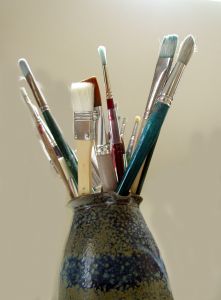 Paintbrushes are important for many artists. I have lots of them for all purposes.
Paintbrushes are important for many artists. I have lots of them for all purposes.